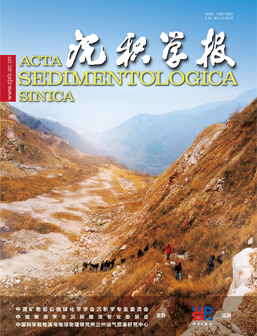Analysis of the Mesozoic – Cenozoic uplift and denudation and restoration of burial history of the Upper Triassic – Jurassic source beds in Qiangtang Basin
doi: 10.14027/j.issn.1000-0550.2024.009
- Received Date: 2023-07-12
- Available Online: 2024-04-09
-
Key words:
- Burial History /
- Tectonic Denudation /
- the Upper Triassic /
- Jurassic /
- Qiangtang Basin
Abstract: Qiangtang Basin, located in the most important oil & gas accumulation belt worldwide - eastern section of Tethys tectonic domain, has been listed as a strategic preparation area for oil & gas resources. However, there had been great arguments on the potential of oil & gas resources, which restricted the overall understanding of oil & gas exploration in Qiangtang Basin. Restoring the denudation history of basin in key tectonic periods and analyzing the burial history of source rocks is of great significance to deepen the hydrocarbon potential of leading source rocks and oil & gas resources in Qiangtang Basin. Based on the current data and previous research results, the main tectonic activities were analyzed and the denudation history of Qiangtang Basin in key tectonic periods were restored by using the structural-sedimentary extrapolation method. At the same time, the burial history of three sets of leading source beds in the Upper Triassic-Jurassic was analyzed by using the TSM basin simulation system. The results showed that: 1) Since the Late Triassic, Qiangtang basin had experienced four periods of tectonic movements: one period from the late Triassic to early Jurassic (210-180Ma)、the late Early Cretaceous (120-110Ma) and the Paleocene to the early Eocene (60-45Ma) and since the early Miocene; 2) At the first period (210-110Ma), Most areas of the basin was uplifted to the surface. The top of the Late Triassic Formation was denuded to form an ancient weathering crust, and then the volcanic rocks were deposited. The central uplift zone of the basin and the Northern Qiangtang were denuded most strongly; Between 120 and 110Ma, the basin strata were folded strongly, and the denudation was most intense in the central uplift zone and its two sides, and in the eastern part of the basin. The denudation is relatively weak in the middle and west of the North Qiangtang depression, and the south of the South Qiangtang. From 60 to 45 Ma, influenced by the long-range effect of the collision between the Indian continent and the Asian continent, the basin shortening rate is 11.9%, and the average uplift and denuded is about 700m. Since 23Ma, the basin continues to be affected by the north-south extrusion stress, and the whole basin escapes to the southeast direction. The basin's thrust faults continue to be active generally and more uniformly, and a number of normal faults or grabens were developed. The uplift rate of all parts of the basin is similar, and the uplift erosion is about 700m to some extent. 3) Influenced by the sedimentary thickness of the stratum and the differential denudation of multi-stage tectonic uplift, the maximum burial of the Upper Triassic Jurassic source beds in Qiangtang Basin occurred twice after the deposition of the J3-K1 Xueshan Formation and after the deposition of the Neogene Nkangtuo Formation and Suonahu Formation, respectively. The two main hydrocarbon generation periods corresponded to the two maximum burial depths and the subsequent tectonic uplift.
| Citation: | Analysis of the Mesozoic – Cenozoic uplift and denudation and restoration of burial history of the Upper Triassic – Jurassic source beds in Qiangtang Basin[J]. Acta Sedimentologica Sinica. doi: 10.14027/j.issn.1000-0550.2024.009 |






 DownLoad:
DownLoad: